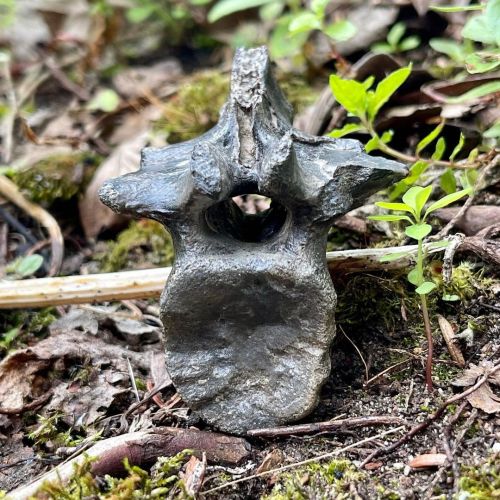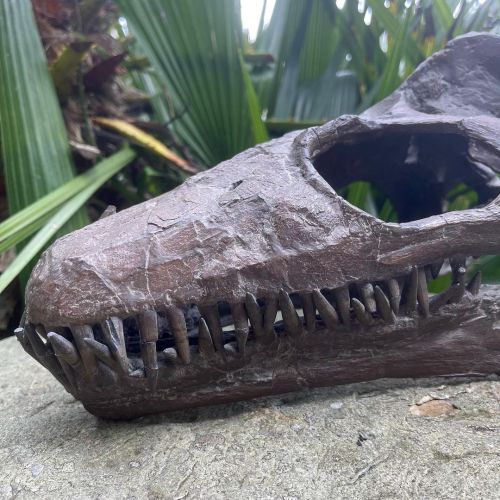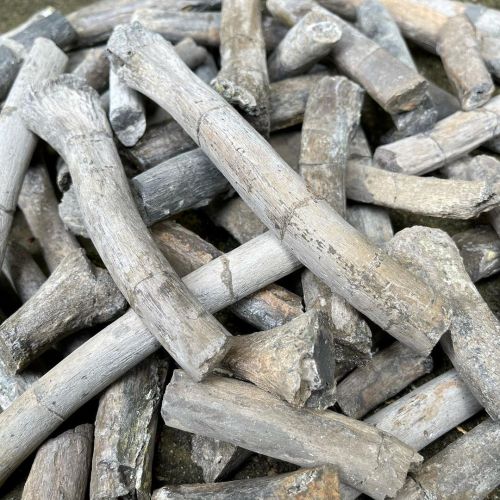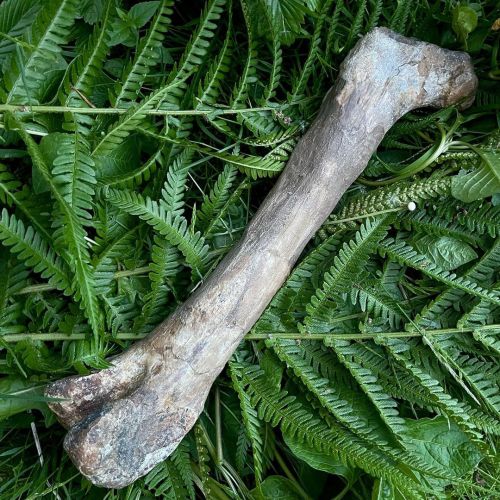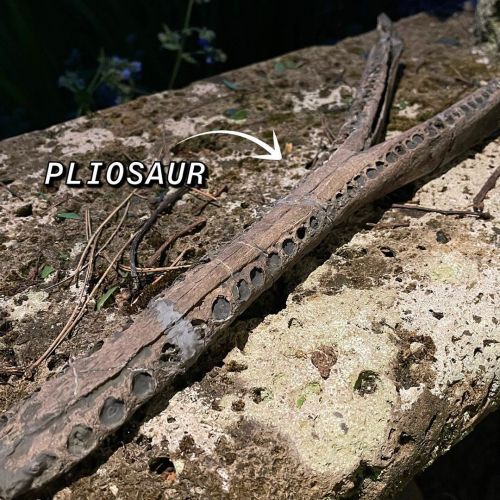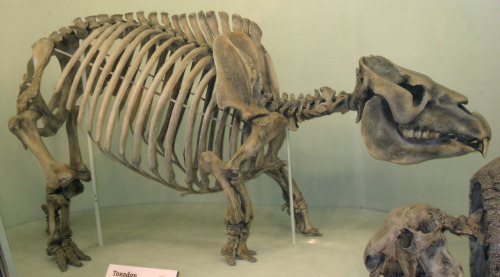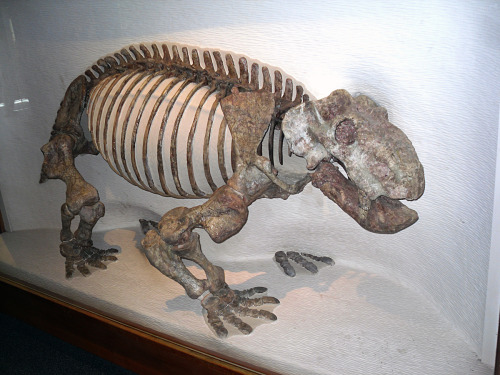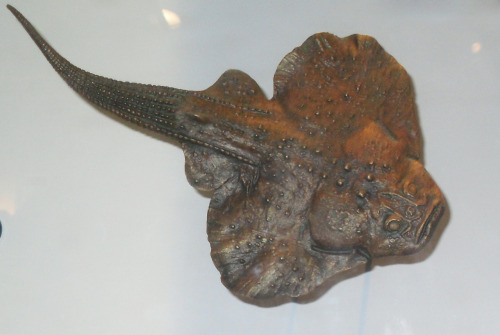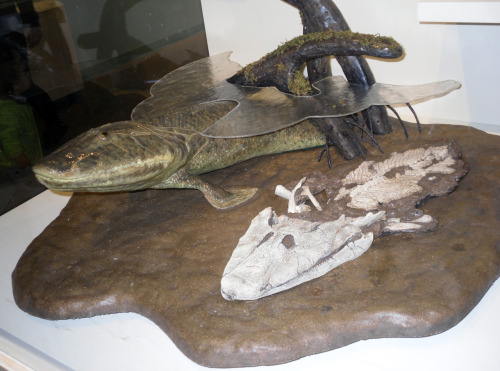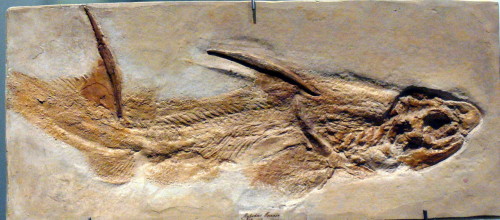#fossil
Jurassic Crocodile
Not all reptiles living during the Jurassic were dinosaurs. Even in prehistoric Britain, animals we know today such as turtles, snakes, lizards & crocodiles were competing with dinosaurs to survive.
.
Follow @neojurassica to see more #prehistoric wonders!
.
www.neojurassica.com
Dinosaur Specialists
Genuine Fossils
⚙️ Display Customisation
Free UK Delivery
✈️ International Delivery
.
#crocodile #reptile #vertebra #bone #fossil #fossils #fossilhunting #nature #natural #naturalhistory #history #archeology #geology #paleontology #palaeontology #mystery #past #prehistory #prehistoricanimals #discovery #fossilhunter #jurassic #jurassicpark #jurassicworld #neojurassica #science #interesting #dinosaurs
https://www.instagram.com/p/CSl-D_qNfz4/?utm_medium=tumblr
Post link
These jaws date back to the Jurassic!
Here we have the fossilised skull of @godiva_the_plesiosaur, found in the Oxford Clay in Britain.
Plesiosaurs we’re marine reptile that lived in the ocean when #Dinosaurs ruled the Earth!
.
Follow @neojurassica to see more #prehistoric wonders!
.
www.neojurassica.com
Dinosaur Specialists
Genuine Fossils
⚙️ Display Customisation
Free UK Delivery
✈️ International Delivery
.
#GodivaThePlesiosaur #plesiosaur #plesiosaurus #plesiosaurs #dinosaur #extinct #extinction #jurassic #jurassicpark #jurassicworld #neojurassica #paleontology #palaeontology #geology #science #archeology #nature #naturalhistory #history #awesome #ammonite #animal #prehistoricanimals #fossil #fossils
https://www.instagram.com/p/CSezlrYt-P8/?utm_medium=tumblr
Post link
The ribs of a plesiosaur dating back to the Jurassic.
These fossils were found at Lyme Regis along the Jurassic Coast of Britain and belong to the same skeleton.
.
Follow @neojurassica to see more #prehistoric wonders!
.
www.neojurassica.com
Dinosaur Specialists
Genuine Fossils
⚙️ Display Customisation
Free UK Delivery
✈️ International Delivery
.
#plesiosaur #plesiosaurus #plesiosaurs #dinosaurs #dinosaur #dinosaurbones #fossil #fossils #bones #ribs #nature #naturalhistory #prehistory #history #archeology #paleontology #palaeontology #geology #science #extinct #extinction #prehistoricanimal #natural #animal #jurassic #jurassicpark #jurassiccoast #jurassicworld #neojurassica
https://www.instagram.com/p/CSZW0PNtA4x/?utm_medium=tumblr
Post link
Plesiosaur vertebrae from the Jurassic Coast of Britain.
These fossils are from church cliffs near the historic town of Lyme Regis.
.
Follow @neojurassica to see more #prehistoric wonders!
.
www.neojurassica.com
Dinosaur Specialists
Genuine Fossils
⚙️ Display Customisation
Free UK Delivery
✈️ International Delivery
.
#plesiosaur #plesiosaurus #plesiosaurs #dinosaurs #dinosaur #dino #extinct #fossil #fossils #fossilhunting #naturalhistory #history #nature #archeology #geology #paleontology #palaeontology #science #jurassic #jurassiccoast #jurassicpark #jurassicworld #neojurassica
https://www.instagram.com/p/CRozKkEN1tm/?utm_medium=tumblr
Post link
A pile of Jurassic ribs.
These all belong to @mike_the_pliosaur and are just some of the many ribs/gastralia preserved. Mike was found along the Yorkshire Coast of Britain and his skeleton is over 175 million years old!
.
Follow @neojurassica to see more #prehistoric wonders!
.
www.neojurassica.com
Dinosaur Specialists
Genuine Fossils
⚙️ Display Customisation
Free UK Delivery
✈️ International Delivery
.
#MikeThePliosaur #pliosaur #hauffiosaur #plesiosaur #plesiosaurus #dinosaur #dinosaur #dinosaurbones #dinosaurskeleton #extinct #bones #ribs #fossil #fossils #fossilfriday #fossilhunting #naturalhistory #nature #history #archeology #geology #paleontology #palaeontology #science #jurassic #jurassicpark #jurassicworld #neojurassica #prehistoricanimals #grave
https://www.instagram.com/p/CRG297BNVWc/?utm_medium=tumblr
Post link
Can you see all the bones in the rock? These belong to a Pliosaur, a predatory marine reptile that lived in the Jurassic seas.
These bones belong to: @mike_the_pliosaur, who’s skeleton was found along the Yorkshire Coast of Britain.
.
Follow @neojurassica to see more #prehistoric wonders!
.
www.neojurassica.com
Dinosaur Specialists
Genuine Fossils
⚙️ Display Customisation
Free UK Delivery
✈️ International Delivery
.
#MikeThePliosaur #pliosaur #pliosaurus #plesiosaur #plesiosaurus #hauffiosaur #dinosaur #dinosaurs #dinosaurbones #extinct #extinctanimals #prehistoricanimals #prehistory #naturalhistory #nature #history #archeology #geology #paleontology #palaeontology #science #stem #naturalworld #fossil #fossils #fossilhunting #jurassic #jurassicpark #neojurassica
https://www.instagram.com/p/CQ4IXFOtQYW/?utm_medium=tumblr
Post link
Here we have the femur of a struthiomimus that died over 65 million years ago when the last dinosaurs walked the Earth.
This fossil is from the USA and is part of a partial skeleton that was discovered. ⚒
.
Follow @neojurassica to see more #prehistoric wonders!
.
www.neojurassica.com
Dinosaur Specialists
Genuine Fossils
⚙️ Display Customisation
Free UK Delivery
✈️ International Delivery
.
#dinosaur #dinosaurs #dino #struthiomimus #gallimimus #extinct #dinosaurbone #fossil #fossils #fossilhunting #palaeontology #paleontology #geology #biology #science #stem #naturalhistory #nature #natural #history #archeology #prehistory #bone #jurassicpark #jurassicworld #neojurassica #prehistoricanimals #naturalhistorymuseum #awesome
https://www.instagram.com/p/CQwhC9qNvya/?utm_medium=tumblr
Post link
This lower jaw dates back to the Jurassic era and belongs to: @mike_the_pliosaur.
This is only a fragment of the jaw, more has been preserved extending the whole length. Mike would have been an incredible predator, with so many teeth to catch and devour his prey.
.
Follow @neojurassica to see more #prehistoric wonders!
.
www.neojurassica.com
Dinosaur Specialists
Genuine Fossils
⚙️ Display Customisation
Free UK Delivery
✈️ International Delivery
.
#MikeThePliosaur #pliosaur #plesiosaur #plesiosaurs #fossils #fossil #extinct #extinction #fossilhunting #yorkshirefossils #dinosaur #dinosaurs #dinosaurbone #teeth #predator #nature #naturalhistory #history #archeology #geology #paleontology #palaeontology #paleobiology #science #jurassic #jurassicpark #jurassicworld #neojurassica #prehistory
https://www.instagram.com/p/CQhKpRitQsf/?utm_medium=tumblr
Post link
Toxodon
Mounted specimen on display at Harvard Museum of Natural History
Reconstruction by Roman Uchytel
When: Pleistocene (~2.6 million to 16,000 years ago)
Where: South America
What:Toxodon is another one of the large herbivorous animals that roamed over South America. Charles Darwin purchased the skull of the first Toxodon known to the Old World during his journey on the Beagle. This skull was sent back to England were Sir Richard Own described it and named the animal Toxodon - ‘bow teeth' based on the curving nature of its gigantic molars. Soon complete skeletons of this amazing animal were known. The first interpratations reconstructed Toxodon as a semi-aquatic animal, much like the modern hippo, but later studies of the limbs and teeth of speciemens show this was incorrect. Toxodon was more the analogue of today’s rhinos than a hippo, a fully terrestrial animal with teeth well adapted for grinding tough plants in somewhat arid environments. Some Toxodon specimens have been found associated with arrowheads, showing that the first people to emigrate into South America had contact with these animals, and appear to have hunted them.
Where does Toxodon fit into the tree of life? Like its contemporary Macrauchenia (which you can see in the background of the reconstruction), its relationship to living mammals is uncertain. It falls into the larger clade of Notoungulata, literally Southern Ungulates, but the placment of this group within placental mammals is highly uncertain. They maybe have a close relationship with animals in the group Afrotheria but research in mammalian systematics is only beginning to be able to evaluate that, and other hypotheses. So what is Toxodon? We just don’t know.
Post link
Dinodontosaurus
Mounted specimen on display at the Harvard Museum of Natural History
Reconstruction by Dmitry Bogdanov
When: Triassic (242 - 230 million years ago)
Where: Worldwide
What:Dinodontosaurus is a synapsid, or ‘mammal like reptile’. It was one of the most common large herbivorous animals in the mid Triassic. These beasts reached lengths of 8 feet (2.4 meters) and are estimated to have weighed hundres of pounds. They fall within the clade Dicynodontia, so named for their two large front teeth. A fossil find in Brazil of over 10 Dinodontosaurus, including juveniles, shows these animals lived in herds and cared for their young.
Synapsids were extremtly common in the Permian, but were hit hard by the end Permian extinction. Some groups, such as the Dicynodonts exemplified by Dinodontosaurus, however, made it though the extinction just fine. The extinction at the end of the Triassic period, however, was brutal to this clade, wiping out the vast majority of species. Some dicynodonts made it though this extinction, but the clade continued to dwindle throughout the rest of the Mesozoic, with the last dicynodont vanishing in the mid Cretaceous. In the synapsid family tree dicynodonts are fairly far up there, falling far closer to gorgonopsids than to the basal “pelycosaurs”.
Post link
Gemuendina
Fossil and model both on display at the American Museum of Natural History, NYC
Model created by Louis Ferraglio
When: Early Devonian (~410 to 392 million years ago)
Where: Germany
What: Gemuendina is an odd little placoderm fish. It is known only from the early Devonian of Germany, from deposits that have been reconstructed to represent areas with anoxic bottom waters. Anoxic means ‘lack of oxygen’, so there was no oxygen in the sediments where the dead or dying fish fell, and thus scavengers and decomposing organisms could not disturb the remains. Specimens of Gemuendina have only been preserved in such conditions because their armor was not a solid shield, as seen in some other placoderms, but rather a series of unfused relatively thin bony plates. This placoderm bears a close resemblance to a ray, with its flat body and series of horizontal fins. This is another excellent example of convergent evolution. Unlike rays, however, the eyes of Gemuendina were on the top of its head, not the side, and its nostrils were on top as well, not on its ventral (under) surface.
Within Placodermi Gemuendina falls into the clade Rhenanida. This group shares the characters of a ray-like body and the lose series of unfused plates that covered their flat bodies. While the ray-like body is a shared derived feature that unites the group, the seires of individual plates is likely a retained primitive feature that was also found in the first placoderms, which gave rise to all of the rest, including massive forms such as Dunkleosteus. Gemuendina is one of the earliest well-known members of the clade, but isolated plates from tens of millions of years earlier in the Silurian period may represent the true first rhenanids. Though the fossils are rare and fragmentary, rhenanids swam throughout the Devonian waters all over the world.
Post link
A statement about fossil material in private hands
Today’s fossil (March 20th) was chosen to be the one highlighted due to the auction going on in NYC that I posted about yesterday. The Tarbosaurus skeleton is the most impressive of the pillaged paleontological prizes, but there is more Mongolian material slated to go up for auction than just this skeleton. In happy news the Tarbosaurus skeleton at least is not going up for auction today, thanks to a restraining order issued by a US Judge, but I am uncertain if this impacts the rest of the stolen material. There is still an online petition protesting the sale of these fossils, which covers all the material, not just the theropod skeleton.
I want to talk for a minute about why it is such a tragedy that auctions like this still occur. Let us examine the skull said to be a Saichaniaspecimen. This dinosaur is /only/ known from Mongolia. Currently at least. Thus it is very likely this skull is from Mongolia, but if it was not and did represent an occurrence of Saichania outside of its previous range? That would be extremely important. It would expand the geographic range of the species and possibly its temporal range as well. So this is a skull that should be in a museum (yes, we do say this) and studied, no matter its providence.
Locality information is a huge problem with private collections and reselling of this material. Museums take great care to record every single detail about where a specimen was collected. For a fossil this would mean exact geographic location, the rock unit it was found in down to precise detail, and if this specimen was likely collected in place or if there was some transportation previous to its discovery. At the bare minimum. You can write pages of field notes about a single specimen, and the collector’s name is also part of the accession information. I personally have dug though 100+ year old field notes in order to solve mysteries such as: “Is it possible all these bones do not belong to the same specimen?” or “Do these two different specimen numbers actually represent a single individual?”. You typically have none of this with private collecting. The locality information is sometimes nothing more than the country or state it came from. Yes, you can have more and there /are/ some private collectors out there who keep geologists on staff (or are geologists themselves) and this precious information is not lost. But that is by far the exception, and if the material is resold over and over again, each transition of ownership introduces another stage at which the specimen can be separated forever from its locality information.
So if we don’t have this information as to providence, so what? Who cares? What does it matter? It matters a great deal. You can have the most spectacular skull in the world, but if you do not know when and where it came from it can tell you hardly anything about the evolutionary history of the group it belongs to. You describe it and put it in an analysis and great, okay, so at one point somewhere on earth at sometime an animal looked like this and was related to these other animals. You don’t know the kind of environment the specimen was in, if it was found far from its close relatives, if it was occurring at the same time as the rest of the clade… Nothing. Anatomy and relationships are just the start of the study of evolution of a lineage, you need the time and geographic component to understand any of the really interesting and important parts of the story.
The above didn’t even touch on how terrible it is when the specimens are not even owned by individuals in their native country. I may really dislike it if say, a rancher in Wyoming finds a crocodile skull and sells it to the highest bidder, but that pales next to what is happening with these mongolian fossils.
Saichania
Mounted specimen on display at Dinosaur Kingdom, in Nakasato, Japan
Reconstruction by Andrey Atuchin
When: Late Cretaceous (~83 to 70 million years ago)
Where: Mongolia
What:Saichania was an armored plant eating dinosaur that roamed the deserts of Mongolia in the late Cretaceous. It was about 22 ft (~6 meters) long and heavily built. It was more fearsome looking than most armored dinosaurs as it did not just have flat armor plates on its body, but rather was covered with spikes. These dinosaurs were armored all over, there is even evidence of armored eyelids! This suit of armor would have protected Saichania from predators in the late Mesozoic mongolian desert. Fossils are typically found in deserts and badlands worldwide, but typically these areas were very different environments when the species represented by the fossils were alive. The ancient Gobi Desert was much closer to the harsh modern environment than most. Saichania was well adapted for desert life, with its stocky body and teeth designed for grinding the toughest of the desert plants.
Saichania falls within Ankylosauridae, a group of armored dinosaurs found almost worldwide. It is one of the last and most derived of the ankylosaurids. One good way to differentiate the deserved ankylosaurids from their armored close relatives is the presence of a tail club. Saichania did not have the most massive club known, but it was still a significant feature. Ankylosaurids were one of the dinosaur groups that made it right up to the end of the Cretaceous period, vanishing with the rest of the non-avian dinosaurs.
Post link

Statement from the President of Mongolia
As some of you might have seen in the media, there is going to be an auction in New York City tomorrow, May 20th 2012. Heritage Auctions is the auction house running the event. The biggest ticket item, and the one that is getting this auction a lot of coverage in the press, is an almost complete skeleton of Tarbosaurus bataar, which is being referred to as a T-rex in some stories. The two dinosaurs are very simular to one another. The problem is that this specimen assuredly comes from Mongolia. Thus, it is stolen.
Here is a letter from Dr. Mark Norell, the dinosaur curator at the American Museum of Natural History, explaining the situation:
It is with great concern that I see Mongolian dinosaur materials listed in the upcoming (May 20) Heritage Auctions Natural History catalogue. For the last 22 years I have excavated specimens Mongolia in conjunction with the Mongolian Academy of Sciences. I have been an author on over 75 scientific papers describing these important specimens. Unfortunately, in my years in the desert I have witnessed ever increasing illegal looting of dinosaur sites, including some of my own excavations. These extremely important fossils are now appearing on the international market. In the current catalogue Lot 49317 (a skull of Saichania) and Lot 49315 (a mounted Tarbosaurus skeleton) clearly were excavated in Mongolia as this is the only locality in the world where these dinosaurs are known. The copy listed in the catalogue, while not mentioning Mongolia specifically (the locality is listed as Central Asia) repeatedly makes reference to the Gobi Desert and to the fact that other specimens of dinosaurs were collected in Mongolia. As someone who is intimately familiar with these faunas, these specimens were undoubtedly looted from Mongolia. There is no legal mechanism (nor has there been for over 50 years) to remove vertebrate fossil material from Mongolia. These specimens are the patrimony of the Mongolian people and should be in a museum in Mongolia. As a professional paleontologist, am appalled that these illegally collected specimens (with no associated documents regarding provenance) are being are being sold at auction.
Sincerely,
Dr. Mark A. Norell
Chairman and Curator
Division of Paleontology
So far the only response from the auction house has been ‘we didn’t break any US laws, why didn’t the Mongolian government contact us before?’ and my favorite, and I will quote here: Mongolia won its independence in 1921 and this specimen is obviously quite a bit older than that.
What can be done? Probably not much, sadly. But it is important that people realize it is /NOT/ okay to take these materials out of their countries of origin with out working with the local governments. That is true for both for profit enterprises such as this auction but also for purely scientific studies. Most of the mongolian material at the AMNH currently is on long term loans, and many amazing specimens have already been returned to Mongolia.
It is very upsetting that the vast majority of articles in the media about this specimen and the auction make NO mention of the illegal source of the material. Spread the word! And please, never buy vertebrate fossils from private collectors.
Tiktaalik - the fishapod
Model by Tyler Keillor and this particular set up on display at the Harvard Museum of Natural History
When: Late Devonian (~375 million years ago)
Where: Found on Ellesmere Island in Nunavut, Canada
What:Tiktaalik is a very critical specimen on the line of tetrapod evolution. In the tetrapod family tree it falls between sarcopterygians (‘lobed fin’ fish) that looked much like the living Coelacanth and more advanced tetrapods, such as Acanthostega.The discovery and announcement of Tiktaalik was very exciting, as fossils on both side of transitional period were known for a long time, but nothing really in the middle. Of course as with the discovery of any 'missing link’ now we have two more 'links missing’: one on either side of Tiktaalik ;). The most important part of the specimen is the anatomy of its forelimb - there was a well developed wrist inside the fin of Tiktaalik! Not only that, but it possibly has the first 'fingers’ seen in the tetrapod lineage. Unfortunately the back end of Tiktaalik is unknown… for now!
In life Tiktaalik would have been an aquatic animal, as its limbs could not support its weight on land - but they would have been very helpful for maneuvering the creature around the shallow waters of prehistoric Canada. Based on the spiracles - openings behind the eyes- of the skull it has been preposed Tiktaalik could have had a form of primitive lung.
If you want to know more about Tiktaalik - check out its website at: http://tiktaalik.uchicago.edu/. And for more in depth reading, I cannot recommend the book 'Your Inner Fish’, written by the discover of Tiktaalik - Neil Shubin, enough! It is a really great explanation of how Tiktaalik fits into the evolution of tetrapods and explaining homology in general! Shubin has done a fantastic job of promoting public science education using this great Tiktaalik specimen as a starting point.
Just look at all of these models getting ready to go out to museums. Maybe one is near you!

Post link
Hybodus
Fossil specimen from the Museum für Naturkunde in Berlin, Germany
Model by Dan Erickson and on display at the American Museum of Natural History
When: Permian to Cretaceous (260 to 80 million years ago)
Where: World Wide
What:Hybodus is a very wide spread, both temporally and geographically, fossil shark. I will be upfront here and say that I may be grossly over representing its temporal range, the literature is rather confusing and there have been a number of species going in and out of Hybodus over the years. So you may want to consider this an article on hybodontiform sharks in general, rather than just the one genus. Shark fossils are fairly rare in the fossil record when compared to other fish because sharks do not ossified their skeleton. However, Hybodus and its kin can be identified from fragmentary remains by their distintive teeth (two kinds in their jaws, both flat and pointy) and their ossified dorsal spines. These spines can be easily seen on both the fossil and the model above, they were most likely involved with stabilization of Hybodus as it swam. The relatively few full body specimens preserved complete the picture, showing us that Hybodus was a streamlined shark with a very heavy ribcage compared to most sharks, and that the males had not only ventral claspers, as seen in modern sharks, but also a series of spines on the side of the head - which are depicted above.
Hybodontiform sharks were the dominate group of sharks in the Jurassic period, and were even very common in the late Cretaceous after modern sharks had originated and diversified. Studies of this archaic shark clade have shown they were most likely over all slow swimmers, but they could enjoy brief bursts of speed if needed. The diverse teeth forms of hybodont sharks imply they did not just eat fish, but also were able to prey on hard shelled invertebrates. In the shark family tree Hybodontiformes is the first group outside of Neoselachii - the clade that contains all living sharks and rays.
Post link
Rutiodon
Mounted specimen on display at the American Museum of Natural History, NYC
Model on display at Dinosaur State Park, Connecticut
When: Late Triassic (~ 230 to 204 million years ago)
Where: North America
What:Rutiodon is a phytosaur. We have looked at another phytosaur before, Redondasaurus, which was one of the biggest and most derived of the phytosaurs. Rutiodon falls on the other end of the phytosaur family tree. Rutidon was about half (~25 feet/7.5 meters) as long as Redondasaurus, but as it was built so much more slenderly, it is more accurate to say it is only 1/3rd or even ¼th the size of its gigantic relative. This different body construction naturally translated into a different mode of life in Rutidon. Notice how slender and long its snout is? Some modern crocodiles have this same style of snout and they are predominately fish eaters, thus it is likely that Rutidon was as well, and it did not prey on terrestrial vertebrates.
Phytosaurs strongly resemble modern crocodiles in other ways, and Rutiodon looks even more like a crocodile than many others of its kin. But this animal is most assuradly a phytosaur, /not/ a crocodile. One easy way to tell is if you look at the front end of its snout, look how the upper jaw is bent? That is a clear phytosaur feature. Another thing to look for is the position of the nose holes. Rutiodon has the phytosaur position of back near the top of its skull - whereas crocodiles have them in the more typically place at the end of the snout.
Minor side trivia about this particular specimen of Rutiodon. It is number FR:AMNH 1, this means it was the first specimen to be catalogue into the fossil reptile collection. This specimen comes from a coal mine in Chatham County, North Carolina, and was collected by the famous paleontologist William Diller Matthew in 1895.
Post link

